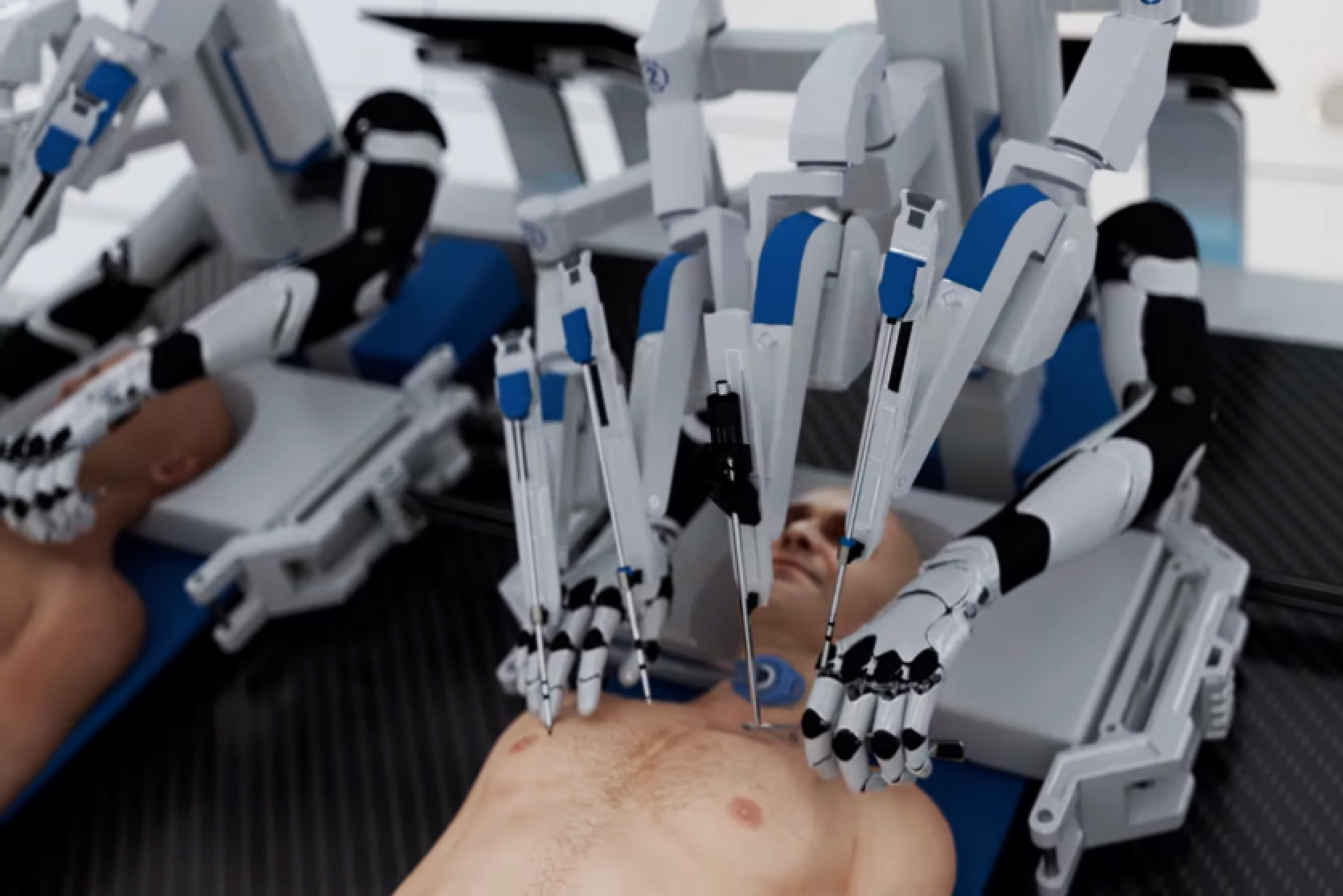Perhaps not everyone will feel comfortable reading on, but be that as it may, the world's first "head transplantation system" from BrainBridge is presented, which is expected to start working within eight years. The startup in the field of neuroscience and biomedical engineering BrainBridge presented its almost fantastical concept in an eight-minute video with creepy sound effects.
In the CGI demonstration, the fully robotic system simultaneously removes the heads of the donor and recipient bodies before swapping them using a conveyor belt. There is not a single person in sight (except for the patients) - robotic arms and lasers work with the help of artificial intelligence.
BrainBridge claims that the system will give new hope to patients suffering from incurable diseases such as terminal stage cancer, neurodegenerative diseases, Alzheimer's and Parkinson's disease, paralysis. The donor for transplantation can be a patient with a dead brain and a functional body and vital organs in good condition.
However, one of the several main obstacles that need to be overcome is medicine's current inability to adequately restore nerve and spinal cord damage. Without this, any head recipient will be paralyzed from the neck down.
The company is looking for specialists to help overcome these barriers and hopes that unveiling the concept will attract "the best talents from around the world."
"In the short term, we expect the project to lead to a breakthrough in spinal cord reconstruction and full-body transplantation. But in the long term, the project will expand into areas that transform healthcare."
The concept belongs to the project leader from Dubai Hashem Al-Ghaili, a biotechnologist and scientific communicator.
"Every step of the BrainBridge concept has been carefully thought out based on extensive research conducted and published by experts in various scientific fields. The goal of our technology is to push the boundaries of what is possible in medical science and provide innovative solutions for those battling life-threatening conditions. Our technology promises to open the doors to life-saving procedures that were unimaginable just a few years ago," says Al-Ghaili.
The full-body transplant project does not stop at just the head transplant: facial transplantation is also planned from a donor. Facial transplantation is already being performed with great success, but it is an extremely complex operation that requires months of planning and multiple surgical teams. According to BrainBridge's plans, the operation will also be performed using the same AI-powered surgical robot as the head transplant.
"The process uses advanced high-speed robotic systems to prevent brain cell degradation and ensure full compatibility. The entire procedure is guided by real-time visualization at the molecular level and AI algorithms to facilitate precise restoration of spinal cord connections, nerves, and blood vessels."
How likely is it that people will ever be able to swap bodies? This idea has captured the imagination for centuries, not least thanks to Mary Shelley's tale of Frankenstein's monster, a creature created from a mixture of body parts, including animals.
The first documented attempt to transplant a dog's head was made in 1908, but without success. Dr. Vladimir Demikhov continued the work in the 1950s, attaching a live head to live dogs. Technically, this did not qualify as a head transplant, and none of the subjects lived very long.
In the 1970s, scientist Dr. Robert White performed a head transplant on a rhesus monkey. It is reported that the animal lived for eight days and was able to see, hear, smell, and even bit one of Dr. White's colleagues, but it could not move its new body because the team could not connect the spinal cord. He performed around 30 such transplants.
Recently, renowned neurosurgeon Sergio Canavero claimed to have successfully transplanted a human head. However, both the donor and the recipient were dead, casting doubt on the "success." Now he hopes that the first successful head transplant is "just around the corner" - he planned to transplant another body to a terminally ill man who changed his mind after falling in love.
Currently, full-body transplantation remains very distant and may never happen. However, the discoveries made in attempting to achieve this could be huge leaps forward in medical assistance, especially regarding spinal cord injuries. Whether heads will ever be swapped like car parts on a factory assembly line remains to be seen. But as BrainBridge claims, without the burdensome fragile body, the brain could live for several hundred years.
Sources: Metro, BrainBridge














Comments (0)
There are no comments for now